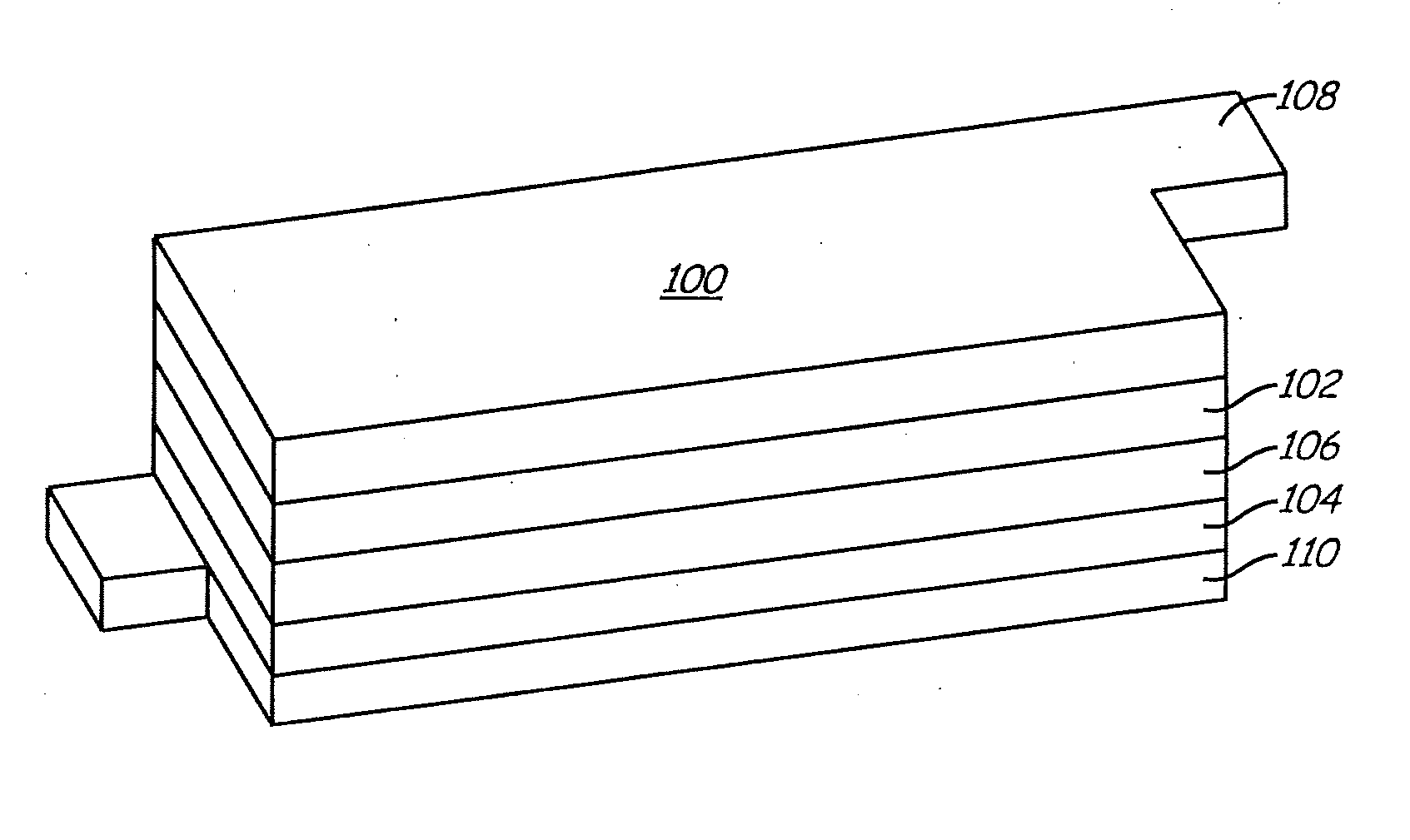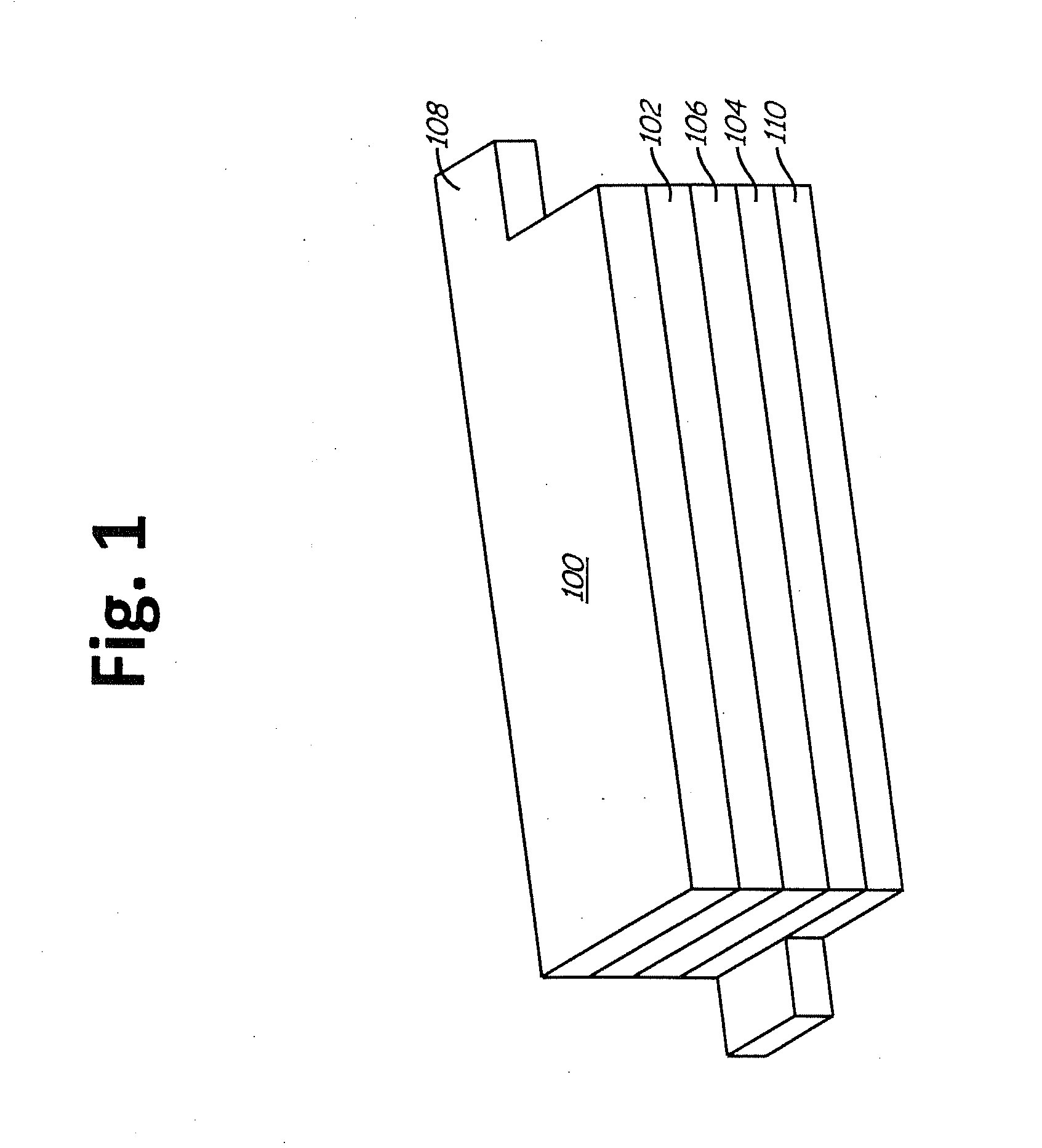Battery cell engineering and design to reach high energy
a battery cell and high-energy technology, applied in the field of high-energy lithium batteries, can solve the problems of low energy density of battery cells, no significant improvement in energy density,
- Summary
- Abstract
- Description
- Claims
- Application Information
AI Technical Summary
Benefits of technology
Problems solved by technology
Method used
Image
Examples
example 1
Construction and Performance Evaluation of High Capacity Negative Electrodes
[0130]To test the impact of different relative amounts of anode composition, binder and conducting additives on the cycling performance of an electrode, electrodes 1-4 with different composition as outlined in Table 1 below were constructed, using a procedure outlined above. The negative electrode active material used is a SiO—Si—C composite, such as described in the '708 application referenced above. The polymeric binder used was a polyimide from a commercial supplier as described above. The electrically conductive material for these batteries was carbon nanotubes, which were obtained from a commercial supplier. The amount of SiO—Si—C composite in electrodes 1 to 4 is varied in the range of 80% to 90%.
TABLE 1Electrode% Active Material% Carbon nanotubes185a280a380>a 4900
[0131]The electrodes were cycled against a lithium foil counter electrode over 40 cycles at a rate of C / 20 for 1st cycle, C / 10 for 2nd cycle...
example 2
Construction and Performance Evaluation of High Capacity Positive Electrodes
[0135]Positive electrodes that have high capacity, high electrode conductivity, high electrode loading balanced with high electrode density have been constructed and tested for cycling performance against a lithium foil counter electrode. The effects of carbon nanotubes as an electrically conductive component were also tested. The lithium metal oxide used for the positive electrode can be approximately represented by the formula Li2MnO3.(1−x)LiNiuMnvCowO2. A first composition had x=0.5 and a second composition had x=0.3. The compositions had a metal halide coating. A discussion of the synthesis and testing of a range of cathode active materials with similar stoichiometries with or without additional oxide or halide coatings can be found in published U.S. patent application 20111 / 0052981A to Lopez et al., entitled “Layer-Layer Lithium Rich Complex Metal Oxides With High Specific Capacity And Excellent Cycling...
example 3
Balance of Positive Electrode and Negative Electrode Capacities with or without Supplemental Lithium
[0139]Batteries 1-6 outlined in Table 2 below were constructed with different capacity balances of HCMR™ positive electrode 12 of example 2 and SiO—Si—C composite negative electrode 1 of example 1 with or without supplemental lithium to test for cycling performance. Batteries 1-4 were constructed with excess negative electrode capacity 10%, 20% a, 30% and 40% over the positive electrode capacity, respectively. Supplemental lithium is added to batteries 1-4 with a capacity equivalent to the difference between the capacities of the anode and the cathode. Thus, battery 1 has the least amount of supplemental lithium, and battery 4 has the greatest amount of supplemental lithium. Batteries 5 and 6 were constructed with balances of 5% and 30% excess negative electrode capacity relative to the positive electrode capacity respectively without supplemental lithium. The amount of supplemental l...
PUM
| Property | Measurement | Unit |
|---|---|---|
| density | aaaaa | aaaaa |
| density | aaaaa | aaaaa |
| density | aaaaa | aaaaa |
Abstract
Description
Claims
Application Information
 Login to View More
Login to View More - R&D
- Intellectual Property
- Life Sciences
- Materials
- Tech Scout
- Unparalleled Data Quality
- Higher Quality Content
- 60% Fewer Hallucinations
Browse by: Latest US Patents, China's latest patents, Technical Efficacy Thesaurus, Application Domain, Technology Topic, Popular Technical Reports.
© 2025 PatSnap. All rights reserved.Legal|Privacy policy|Modern Slavery Act Transparency Statement|Sitemap|About US| Contact US: help@patsnap.com



